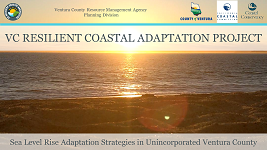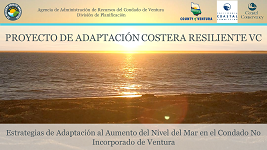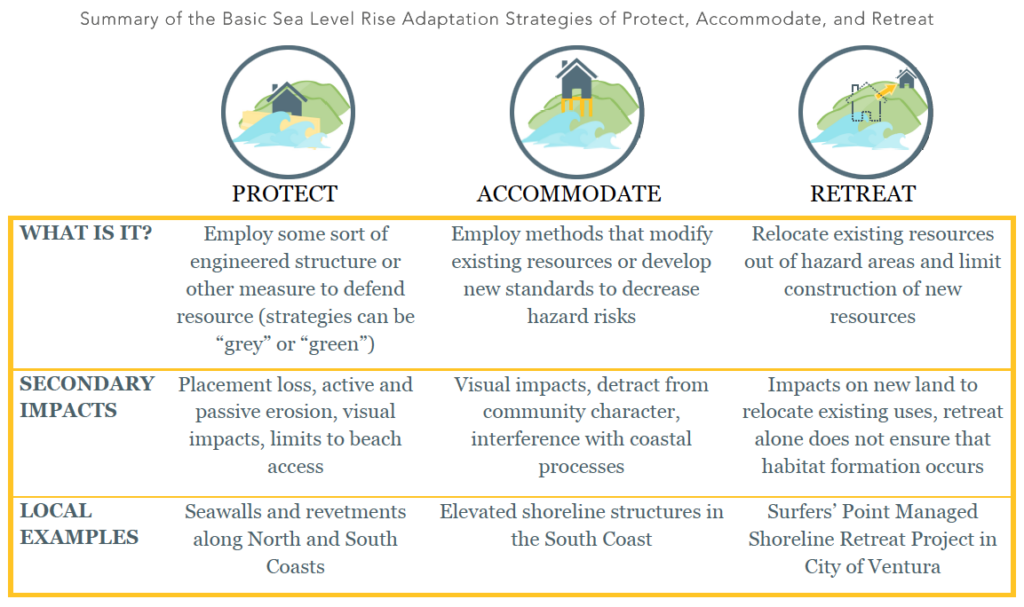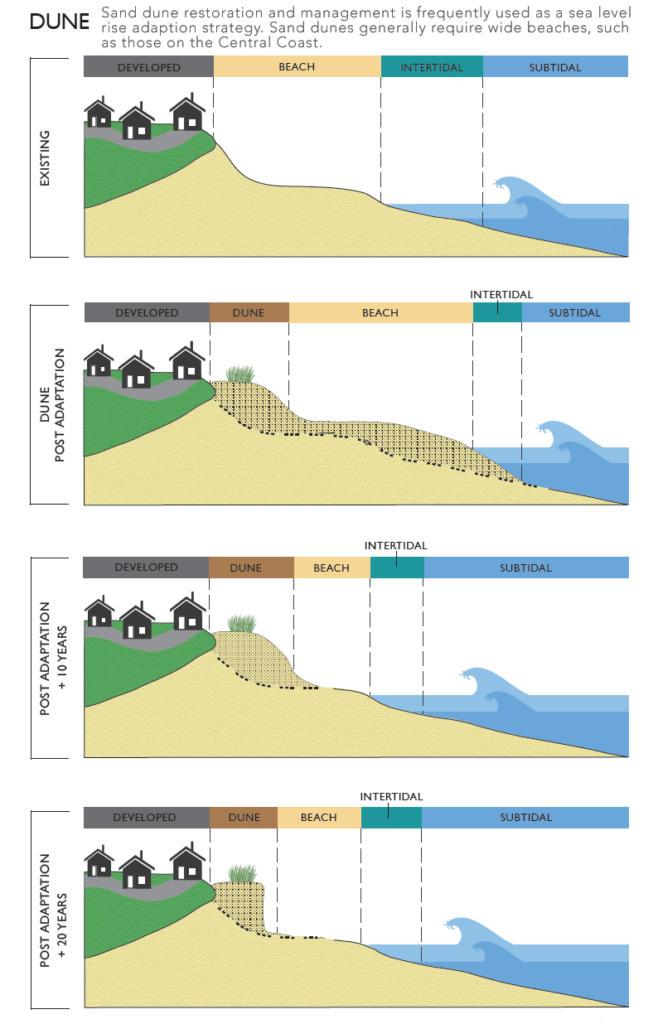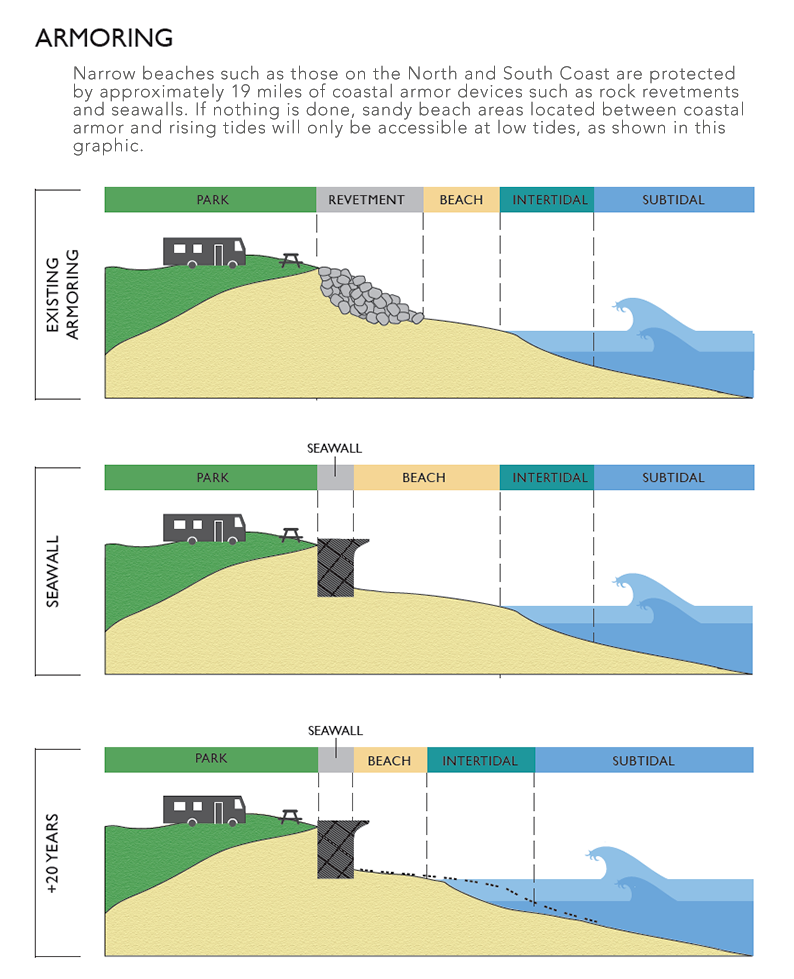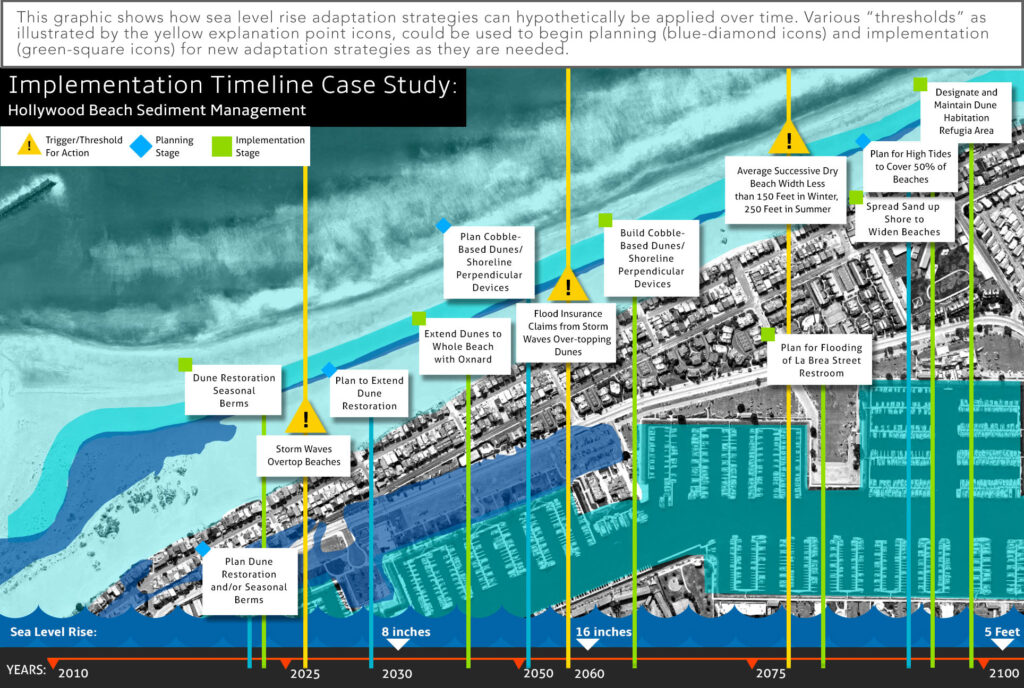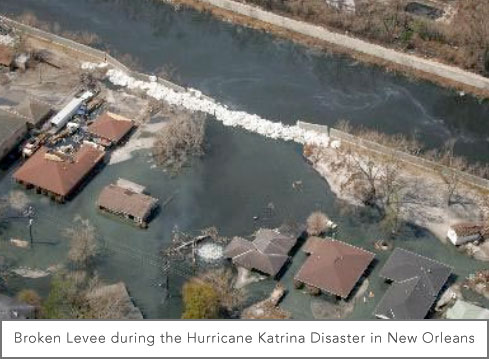The Basics of Sea Level Rise Adaptation and Potential Adaptation Options for Unincorporated Ventura County
Sea level rise is a slow-moving threat, but it demands action. Inaction or delayed action may result in more costly damages and emergency repairs due to the cumulative effect of sea level rise, flooding, storms, and coastal erosion. While the County could choose to “wait and see” or follow a policy of “non-intervention,” this approach is likely to result in substantial damages and costly emergency repairs that could be avoided through proactive planning to ensure conservation of coastal resources and protection of development. The Ventura County Planning Division is working in collaboration with other County departments and community stakeholders to identify adaptation strategies in order to make the unincorporated areas of Ventura County more resilient in the face of rising sea levels.
Protect, Accommodate, and Retreat: Approaches to Coastal Adaptation
Sea level rise adaptation approaches generally fall into three main categories: protect, accommodate, or retreat. The most effective adaptation plan will use a combination of these approaches over time. A combination or “hybrid” approach to adaptation allows for changing conditions and balances economic, environmental, and safety goals over time.
The Protection Approach
Protection strategies employ some sort of engineered structure or other measure to defend development (or other resources) in its current location without changes to the development itself. Protection strategies can be divided into “gray” and “green” defensive measures, and then further divided into “hard” and “soft” measures. A “gray”, “hard” approach is usually an engineered structure that can be positioned either alongshore (such as a seawall, revetment, or offshore breakwater) or cross-shore (such as a groin or harbor jetty). Cross-shore structures tend to trap sand and widen the beach up-coast of the structure. A “soft” protection approach may be to nourish beaches, while a “green”, “soft” approach may be to restore sand dunes.
The California Coastal Act allows protective devices for coastal-dependent uses, existing structures, and public beaches at risk of erosion when these seawalls and revetments are designed to eliminate or mitigate adverse impacts on local shoreline sand supply. It also directs that new development is sited and designed to not require future protection that may alter a natural shoreline. It is important to note that most protective devices are costly to construct, require steadily increasing maintenance costs, and have impacts on recreation, habitat, and natural defenses such as beaches and wetlands.
The Accommodation Approach
Accommodation strategies increase resilience to the impacts of sea level rise by employing methods that modify existing development or design new development to decrease hazard risks. On an individual project scale, these accommodation strategies include actions such as elevating structures, performing retrofits, using materials to increase the strength of development to handle additional wave impacts, building structures that can easily be removed during storms, or using additional setback distances to account for acceleration of erosion. On a community-scale, the accommodation strategies could be integrated into the land use plans, zoning ordinances, and strategic planning documents for partner agencies.
The Voluntary Retreat Approach
Retreat strategies relocate or remove existing development out of hazard areas and limit the construction of new development in vulnerable areas. This approach is not an evacuation but rather a strategic means of relocating the most vulnerable development and infrastructure out of harm’s way while maintaining coastal resources and access for future generations. Such strategies are commonly considered as longer-term options.
The Hybrid Approach
Inevitably, any successful adaptation effort will require a range of strategies that vary across both spatial and temporal scales. Consistent monitoring and thresholds associated with the changing sea levels can be used to transition from one strategy to the other. Once a given sea level rise amount is reached, the planning or implementation of another strategy would be triggered. Even though every approach will be some form of a hybrid, it is useful to think about the general categories of adaptation strategies described above to help frame the discussion.
Maladaptation and Cumulative Effects
Avoiding “maladaptation” is an important component of long-term planning for sea level rise. It occurs when an adaptation strategy becomes more harmful than helpful. When identifying appropriate adaptation responses, the following principles reduce the risk of maladaptation (Barnett, J. & O’Neill; Maladaptation, Global Climate Change; 2010):
- The strategy should support the protective role of ecosystems and sustaining their physical processes.
- The strategy should avoid disproportionately burdening the most vulnerable citizens.
- The strategy should avoid high-costs, unless holistic economic work (including ecosystem services, infrastructure upgrades, and damages) demonstrates a strong net benefit over time.
- The strategy should incentivize adaptation (e.g., reward early actors).
- The strategy should increase flexibility and not lock the community into a single long-term solution.
The strategy should reduce decision-making time horizons to better incorporate the evolving science of sea level rise.
The strategy should not increase long-term greenhouse gas emissions.
The strategy should account for long-term maintenance costs over time, and those costs should be lower than they would be without use of the strategy.
One adaptation measure may reduce an identified hazard in the short term but also lead to unintended secondary effects in the long-term. An example of maladaptation is the levee system for the City of New Orleans. While the levees provided for short-term adaptation and allowed communities to remain in areas that lie below sea level, they increased the long-term vulnerability to flooding¾ both by providing a false sense of security and by being under-engineered or insufficiently maintained to account for the impact of large storm events.
Adaptation Strategies Report
The Planning Division’s Sea Level Rise Adaptation Strategies Report is available by clicking on the link below. The Adaptation Strategies Report provides a summary of the Vulnerability Assessment results, describes various adaptation strategies that could be used to improve the resilience of unincorporated Ventura County, and provides examples of adaptation pathways to help illustrate coastal adaptation planning approaches.
The revised Sea Level Rise Adaptation Strategies Report was reviewed and discussed during a work session before the Ventura County Planning Commission on March 7, 2019 and the Board of Supervisors on September 10, 2019. The Sea Level Rise Adaptation Strategies Report and PowerPoint slideshow for the Planning Commission and Board of Supervisors work sessions are available by clicking on the links below:
- Click Here for the VC Resilient Revised Sea Level Rise Adaptation Strategies Report
- Click Here for the VC Resilient Planning Commission Work Session PowerPoint Presentation
- Click Here for the VC Resilient Board of Supervisors Work Session Materials
- Click Here for the VC Resilient Board of Supervisors Work Session PowerPoint Presentation
Click here to complete a brief survey to provide your opinion on sea level rise adaptation planning

